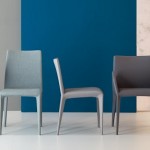The BMX models have been around since the 1960s and are still very much popular today. But unlike the 1960s, modern day motocross bicycles come in many shapes and sizes in order to suit many different riding styles and terrains. The majority of them follow the same principle of lightweight, one gear, one break design which works for both racing and freestyle, however some BMX bikes are optimized for one or the other. BMX bikes are commonly divided in several different types based on how large their wheels are, and how long their frame is.
 The most general purpose BMX model is the cruiser bike which is the jack of all trades and master of none. The cruiser is great for beginners and adult riders since it has a larger frame with larger wheels, some going up to 29 inches which is the perfect size for adults who want to use it as their commute bike. And because the size of a 29 BMX is roughly the same as a regular road or mountain bike, it’s mostly used for racing but can be also used for simple tricks. Cruiser bikes race in their own separate category because of their larger frames and wheels. These are much faster but less maneuverable bikes compared to any other type, hence the separate category when it comes to BMX racing sports.
The most general purpose BMX model is the cruiser bike which is the jack of all trades and master of none. The cruiser is great for beginners and adult riders since it has a larger frame with larger wheels, some going up to 29 inches which is the perfect size for adults who want to use it as their commute bike. And because the size of a 29 BMX is roughly the same as a regular road or mountain bike, it’s mostly used for racing but can be also used for simple tricks. Cruiser bikes race in their own separate category because of their larger frames and wheels. These are much faster but less maneuverable bikes compared to any other type, hence the separate category when it comes to BMX racing sports.
While the cruiser variant from 24 inch to 29 BMX is meant mostly for racing, the flatland is made for freestyle riding on flat terrain. These bikes feature a smaller frame and wheelbase and offer better leverage which allows the rider to control the bike with less effort. The flatland uses 20 inch wheels, but has a much smaller frame for the purpose of better grip.
Except for the two aforementioned, other BMX types are mostly variations of said types, for example the street/dirt-jump/park BMX which is similar to the flatland but the focus is much more on tricks and for that purpose it is designed to handle crashes really well. Due to its sturdy light rig, it makes for the best variant for rougher riding on ramps and half pipes and therefore it’s the most popular model amongst younger riders.
And the last variant is the classical BMX used for track racing on sloped tracks made of dirt or cement. The original design from the 1960s is still prevalent today with Olyimpic sports – it’s used as the base for the many new variations that resemble the original design.


